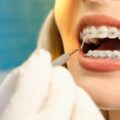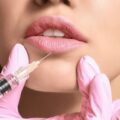Exploring the world of orthodontics can be potentially overwhelming, especially when it comes to getting braces. The process involves various steps, from understanding the need for braces to maintaining your new smile post-treatment. Our detailed guide provides valuable information for individuals in Henderson, NV, examining the types of braces available, the selection of an orthodontist, consultation process, financing options, and more. As we shed light on each aspect of this journey, we invite you to engage with this important topic, equipping yourself with the necessary knowledge to make informed decisions about your orthodontic health.
Understanding the Need for Braces
Understanding the need for braces is vital, as they play a pivotal role in correcting various dental misalignments and improving oral health. These orthodontic devices serve to realign and straighten teeth, contributing to a more balanced and aesthetically pleasing smile. However, it’s essential to recognize that the use of braces is not merely cosmetic. Malocclusions, or improper bites, can lead to a range of oral health issues, including tooth decay, gum disease, and even tooth loss. Braces address these problems, promoting healthier gums and teeth.
In exploring braces alternatives, it’s worth considering options like clear aligners or retainers, which can be less visible and more comfortable. However, these options may not be suitable for all types of alignment issues, making braces an indispensable tool in orthodontic treatment.
Meanwhile, the psychological impacts of braces should not be overlooked. While some individuals may experience temporary discomfort or self-consciousness, the long-term benefits typically outweigh these short-term drawbacks. Enhanced self-esteem, improved oral functionality, and a healthier smile are just some of the positive psychological outcomes associated with braces. Ultimately, understanding the significance of braces is critical in making informed decisions about oral health.
Different Types of Braces
In the field of orthodontics, there are various types of braces suitable for different dental conditions and aesthetic preferences. Traditional metal braces, a common and highly effective treatment, work to align teeth through a system of brackets and wires. Alternatively, invisible aligner options offer a less noticeable, yet equally proficient, method for correcting misalignments and bite issues.
Traditional Metal Braces
Embracing the most common type, traditional metal braces have been a reliable choice for orthodontic treatment in Henderson, NV, offering a proven method for correcting misaligned teeth. These types of braces consist of high-grade stainless steel, with brackets attached to each tooth and interconnected by an archwire. Adjustments to the archwire apply pressure to the teeth, gradually moving them to their proper positions.
The braces aesthetics of traditional metal braces have evolved over the years, with smaller, less noticeable brackets. Some options even allow for customization with different colored bands, making them a fun choice for younger patients.
Opting for traditional metal braces does require dietary changes to protect the braces and maintain oral health. Sticky, hard, or chewy foods can damage the braces, while sugary foods can contribute to plaque buildup. As a result, orthodontists recommend a diet rich in fruits, vegetables, lean protein, and whole grains.
Regular dental check-ups are also essential to monitor progress and make necessary adjustments. Despite being less discreet compared to newer orthodontic options, traditional metal braces remain an effective, cost-efficient solution for a broad range of dental misalignment issues in Henderson, NV.
Invisible Aligner Options
For those seeking a more discreet orthodontic solution in Henderson, NV, invisible aligners present an innovative and aesthetically pleasing alternative to traditional metal braces. These orthodontic devices are virtually unnoticeable, offering an effective treatment for teeth and jaw alignment issues without affecting your physical appearance.
There are several brands of invisible aligners available, each with its unique features and benefits. Key factors to take into account include the material’s durability, comfort, and the extent of correction required for your specific orthodontic condition. Aligner hygiene is an essential component of treatment success. The aligners should be cleaned regularly to prevent bacterial growth and maintain oral health.
Dietary adjustments may also be necessary when using invisible aligners. Unlike traditional braces, aligners can be removed during meals, reducing restrictions on food choices. However, it is important to clean your teeth and the aligners before reinsertion to avoid trapping food particles and bacteria.
Invisible aligners offer a flexible and less noticeable approach to orthodontic treatment. However, they require discipline and responsibility from the user. With proper care and maintenance, these aligners can efficiently correct various orthodontic issues, resulting in a healthier and more attractive smile.
Selecting an Orthodontist in Henderson
Choosing a qualified orthodontist in Henderson is a critical step in your journey to achieving a healthier and more appealing smile. This process involves examining the practitioner’s credentials and understanding the treatment options they offer, including various braces options in Henderson, NV. In the following, we will explore these aspects in detail to equip you with the knowledge necessary to make an informed decision.
Evaluating Orthodontist Credentials
Your journey to a perfect smile in Henderson necessitates the careful evaluation of an orthodontist’s credentials, ensuring they possess the necessary expertise and qualifications. The orthodontist’s proficiency is critical as it directly impacts the quality of care you’ll receive. This expertise is built over years of extensive training and hands-on experience in diagnosing, preventing, and correcting malpositioned teeth and jaws.
An orthodontist’s educational background is another essential consideration. Orthodontists must complete a dental degree, followed by a specialized residency in orthodontics that lasts two to three years. Verify if your potential orthodontist graduated from an accredited dental school and has their specialty training recognized by the American Association of Orthodontists (AAO).
Furthermore, check if they are board-certified, meaning they have voluntarily gone through a rigorous process to demonstrate their commitment to the highest level of patient care. The American Board of Orthodontics (ABO) certification is a significant attestation of an orthodontist’s competence.
Lastly, look for any continuous learning efforts. Orthodontics is an evolving field, so it’s essential that your orthodontist stays updated with the latest techniques and technologies. This commitment to lifelong learning ensures you receive the most effective and efficient treatment possible.
Understanding Treatment Options
Understanding the multitude of treatment options available in Henderson can certainly seem intimidating, but grasping these options is an essential step in selecting the ideal orthodontist for your unique dental needs. It is imperative to understand that orthodontic treatment is not just about braces installation; it also includes braces maintenance and dietary adjustments.
Orthodontists in Henderson offer a variety of braces, including traditional metal braces, ceramic braces, lingual braces, and clear aligners like Invisalign. Each type requires different maintenance practices. For instance, metal and ceramic braces require regular tightening, while clear aligners necessitate strict cleaning routines.
Dietary adjustments are equally important in orthodontic treatment. Certain foods can damage braces or hinder their effectiveness. Orthodontists often advise avoiding hard, crunchy, or chewy foods, such as popcorn, hard candy, and gum.
Discussing these aspects with potential orthodontists can provide insight into their expertise and approach to treatment. Understanding the intricacies of braces maintenance and dietary adjustments not only helps in making an informed decision but also prepares you for the commitment required. Hence, a thorough grasp of treatment options significantly aids in selecting a suitable orthodontist in Henderson.
Initial Consultation: What to Expect
Starting the journey towards a healthier smile commences with the initial consultation; here, patients can anticipate a thorough examination and discussion of potential orthodontic treatments. The process is designed to guarantee any orthodontic fears while providing a detailed understanding of the patient’s dental profile. Appointment scheduling is made flexible to cater to a variety of lifestyles, ensuring that everyone has the opportunity to pursue their dental health goals.

During this initial consultation, a close look is taken at the patient’s oral health, including detailed dental and skeletal assessments. The orthodontist will examine the mouth, teeth, and jaws, utilizing X-rays, photographs, and digital scans as necessary. This evaluation will provide a clear picture of the patient’s current dental health and potential needs.
The consultation also involves a detailed discussion of the most suitable orthodontic treatment options based on the assessment findings. This is a valuable opportunity to ask questions and express any concerns about the proposed treatment plans. Remember, the goal is to make sure that patients are comfortable and fully informed about their treatment journey. Therefore, every effort is made to provide detailed, easy-to-understand information, enabling patients to make informed decisions about their smile transformation.
The Cost of Braces
Determining the cost of braces in Henderson, NV, involves several factors, including the severity of the dental issue, the type of braces selected, and the expected duration of treatment. Traditional metal braces are often the least expensive option, while ceramic braces, lingual braces, or Invisalign can cost more.
Insurance coverage can greatly influence the final out-of-pocket cost. Many dental insurance plans cover a portion of orthodontic treatments, but it’s important to check your policy for specifics. Some plans may cover only traditional braces, while others may include coverage for more expensive options.
The cost of braces also includes periodic adjustments and follow-up visits to the orthodontist. These appointments are vital for ensuring the effectiveness of the treatment and managing any discomfort or pain that may occur during the process. Pain management is an important aspect of orthodontic care and is factored into the overall cost of braces.
Possible Financing Options
To alleviate the financial burden associated with orthodontic care, several financing options are available to patients in Henderson, NV.
Firstly, insurance coverage can greatly reduce out-of-pocket expenses. Many dental insurance plans cover a portion of orthodontic treatment, especially for minors. It’s important to check with your provider to understand the extent of your coverage, including the percentage of costs covered and any applicable lifetime caps.
In addition to insurance, Health Savings Accounts (HSAs) offer another means to finance braces. HSAs are tax-free accounts that allow individuals to save for medical expenses. The funds accumulated can be used towards paying for braces, providing relief for those without insurance or with limited coverage.
Some orthodontic practices also offer in-house financing options, providing patients with the flexibility to pay for their treatment over time. These plans often involve an initial down payment followed by monthly installments.
Lastly, consider third-party financing companies that specialize in healthcare expenses. Such organizations offer loan options with varying interest rates and repayment schedules, enabling patients to select a plan that fits their budget.
It’s important to carefully evaluate each option and consult a financial advisor, if needed, to make an informed decision that aligns with your financial situation and orthodontic needs.
Preparing for the Braces Procedure
Before beginning the journey to a healthier smile with braces, certain steps must be taken to guarantee the best possible outcome. This involves a thorough focus on pre-procedure oral care, maintaining a healthy dental environment for the procedure. Additionally, acquiring a detailed understanding of the braces procedure, from the initial fitting to eventual removal, can alleviate any anxieties and help set clear expectations.
Pre-Procedure Oral Care
Ensuring excellent oral health prior to getting braces is essential, as it sets the foundation for a successful orthodontic procedure. One cannot overemphasize the importance of gum health in this situation. Healthy gums form a robust support system for braces, preventing complications during and after the procedure. Regular brushing and flossing, coupled with professional cleanings, help maintain gum health by preventing plaque buildup and gum disease.
Dietary restrictions also play a significant role in pre-procedure oral care. Certain foods can exacerbate existing oral issues or create new ones, potentially complicating the braces procedure. For example, sticky or hard foods can damage teeth and gums, making them less resilient to the pressure exerted by braces. Therefore, limiting the intake of such foods improves oral health and prepares the mouth for braces.
In addition, a balanced diet rich in calcium and vitamin D is recommended to strengthen teeth and bones, ultimately facilitating a smoother braces procedure. Regular dental check-ups, prompt treatment of oral issues, and adherence to a dentist-recommended oral care regimen are also important. Remember, a little preparation can go a long way in ensuring the success of your orthodontic journey in Henderson, NV.
Understanding the Process
Mastering the complex process of preparing for a braces procedure requires a thorough understanding of the steps involved, from initial consultation to the day of the appliance’s fitting. The initial consultation with your orthodontist is the perfect time to explore braces alternatives. There are numerous options available today, including clear aligners and lingual braces, each with its unique benefits and considerations.

After deciding on the type of braces, the importance of oral hygiene comes to the forefront. A clean oral environment is crucial for the success of the braces procedure. This includes regular brushing, flossing, and professional cleanings to eliminate plaque and tartar that could interfere with the braces.
Next, the orthodontist will take detailed measurements of your mouth, including X-rays and impressions of your teeth. These are used to plan the precise placement of each individual bracket.
On the day of the fitting, the braces are applied using a special adhesive. Initial discomfort is normal but will subside as your mouth adjusts. Finally, you’ll receive instructions on how to care for your braces and schedule periodic adjustments. Understanding this process ensures a successful and smooth braces experience.
The Process of Getting Braces
Typically, the journey towards obtaining braces in Henderson, NV, commences with an initial consultation with a skilled orthodontist to assess your oral health and discuss potential treatment options. This thorough examination often includes X-rays and bite impressions to provide a detailed view of your unique dental structure. Utilizing this information, the orthodontist will develop a tailored treatment plan, discussing with you the traditional braces or braces alternatives that may be suitable, depending on your specific needs and preferences.
Financial considerations are pivotal in this process. It’s important to understand the costs involved and how dental insurance may help offset them. Different insurance plans offer varying levels of orthodontic coverage, so it’s advisable to discuss this with your provider before starting treatment. Financing options may also be available through your orthodontic office, making the process more manageable.
Following the initial consultation and financial discussions, the orthodontist will schedule an appointment to apply the braces. This process typically involves cleaning and drying your teeth, applying bonding glue, placing the braces, and then securing them with an archwire. This is the first step on your journey to a healthier, straighter smile.
Living With Braces: Tips and Tricks
Once your braces are successfully applied, adjusting to the new oral accessory becomes the next significant phase, necessitating adapted habits and special care for optimal results. This includes embracing a braces-friendly diet and developing coping strategies to manage any discomfort or changes to your daily routine.
A braces-friendly diet primarily consists of foods that are soft and easy to chew. This reduces the risk of damaging the brackets or wires and includes dishes like mashed potatoes, pasta, and steamed vegetables. Avoid hard, crunchy, or sticky foods like apples, popcorn, and gum, as these can cause harm to your braces.
Adapting to braces also requires effective coping strategies. For example, using orthodontic wax can alleviate discomfort caused by the braces rubbing against the inside of your mouth. Regularly rinsing with a saltwater solution can also soothe irritated oral tissues.
Maintaining oral hygiene is paramount. Brushing and flossing may be more challenging with braces, but investing in specialized tools like interdental brushes or water flossers can make this task easier and guarantee your oral health is not compromised.
Ultimately, living with braces requires patience and adaptability. But with the right adjustments and care, the journey can be a smooth one.
Regular Orthodontic Appointments
In the journey of orthodontic treatment, regular appointments with your orthodontist play an important role in ensuring the successful alignment and health of your teeth. These visits allow your orthodontist to monitor your progress, make necessary adjustments to your braces, and tackle any unforeseen issues early on.
Advancements in orthodontic technology have made treatment more important and efficient. The use of digital imaging and 3D models allows orthodontists to plan and execute treatment with more precision. Innovative bracket systems and aligners can greatly reduce the treatment duration and the frequency of appointments.
Appointment scheduling is crucial to maintaining the momentum of your treatment. Most orthodontists recommend visits every 4 to 6 weeks. However, this can vary depending on the complexity of your case and the type of braces you have. It’s necessary to keep your appointments and reschedule promptly if you cannot attend.
In Henderson, NV, many orthodontists offer flexible scheduling options, including early morning and late afternoon appointments, to accommodate your busy lifestyle. Remember, consistent and regular orthodontic appointments are the backbone of successful orthodontic treatment, keeping your journey to a perfect smile on track.
The End of Treatment: Debonding Process
Reaching the final stage of your orthodontic journey, the demanding process signifies the successful completion of your treatment and involves the careful removal of your braces. This procedure is performed with meticulous attention to detail to guarantee minimal discomfort and peak oral health.
Post-debanding care is essential to maintaining the results of your orthodontic treatment. It often involves thorough cleaning of the teeth and gums to eliminate any residual adhesive. Your orthodontist will provide specific instructions tailored to your unique needs, including guidelines on oral hygiene, diet, and follow-up appointments.
Retainer selection is another critical aspect of the demanding process. Retainers are custom-made devices designed to hold your teeth in their new positions. They play an essential role in preventing relapse, which is the tendency of teeth to drift back to their original positions. You may be offered a choice between removable and fixed retainers, depending on your specific circumstances and preferences.
Maintaining Your New Smile
Ensuring the longevity of your newly aligned smile necessitates a conscientious commitment to oral care post-braces. Dental hygiene’s importance cannot be overstated in the preservation of your newly straightened teeth. An excellent oral care routine that includes regular brushing, flossing, and dentist visits is critical to maintaining the health of your teeth and gums, thereby preserving your new smile.
Following the removal of your braces, your dentist may recommend you to wear retainers. These help in stabilizing the new position of your teeth while the surrounding gum and bone adjust to the changes. Adherence to the use of these retainers as instructed is a critical aspect of maintaining your new smile.
Smile confidence boosting is another essential aspect of maintaining your new smile. Confidence in your smile can motivate you to take better care of your oral health. It can prompt you to make regular dentist appointments, maintain a balanced diet, and avoid habits that could harm your teeth like smoking or excessive consumption of sugary foods.
Frequently Asked Questions
Are There Any Foods I Should Avoid While Wearing Braces?
Yes, a braces-friendly diet is essential. You should avoid hard, sticky, or chewy foods, as their texture can impact and potentially damage your braces. Opt for softer, easy-to-chew foods to maintain the integrity of your braces.
What Should I Do if My Braces Cause Discomfort or Pain?
If your braces cause discomfort or pain, it’s often a normal part of braces adjustment. However, persistent pain should not be ignored. Over-the-counter pain relievers can help, but consult your orthodontist for persistent issues.
How Can I Maintain Oral Hygiene Effectively With Braces?
Maintaining oral hygiene with braces involves using brace friendly toothpaste and employing effective flossing techniques. Regular brushing and flossing helps prevent plaque build-up and keeps your braces and teeth in excellent condition.
Is It Possible to Play Sports or Musical Instruments With Braces?
Yes, it is possible to play sports or musical instruments with braces. The durability of braces allows for these activities. However, protection methods like mouthguards for sports or special orthodontic relief wax for musicians are recommended.
What Are the Signs of an Orthodontic Emergency and What Should I Do?
Orthodontic emergencies involve severe pain, dislodged appliances, or trauma to the mouth. Emergency preparedness includes contacting your orthodontist immediately, handling dislocations gently, and avoiding further injury by not trying to fix appliances yourself.
Jessica has a flair for writing engaging blogs and articles. She enjoys reading and learning new things which enables her to write different topics and fields with ease. She also strives to break down complex concepts and make them easy for anybody to comprehend.





